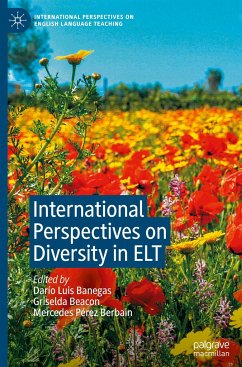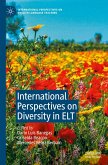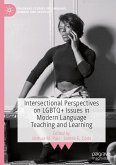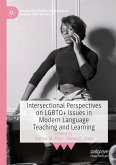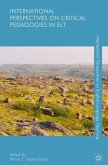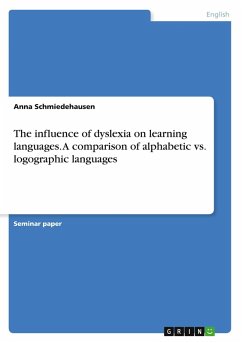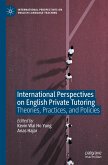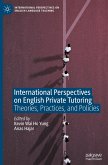International Perspectives on Diversity in ELT
Herausgegeben:Banegas, Darío Luis; Beacon, Griselda; Pérez Berbain, Mercedes
International Perspectives on Diversity in ELT
Herausgegeben:Banegas, Darío Luis; Beacon, Griselda; Pérez Berbain, Mercedes
- Gebundenes Buch
- Merkliste
- Auf die Merkliste
- Bewerten Bewerten
- Teilen
- Produkt teilen
- Produkterinnerung
- Produkterinnerung
This edited book provides professionals in the field of English Language Teaching (ELT) with a situated and culturally-responsive account of diversity and inclusion in English language education, from primary to higher education and in a wide range of settings. The volume focuses on three overlapping areas: interculturality, special education needs, and gender. The chapters in each section seek to help readers reflect on the opportunities and challenges of diversity as a step towards inclusive practices, and raise awareness of critical topics across the curriculum and beyond by engaging in…mehr
![International Perspectives on Diversity in ELT International Perspectives on Diversity in ELT]() International Perspectives on Diversity in ELT117,99 €
International Perspectives on Diversity in ELT117,99 €![Intersectional Perspectives on LGBTQ+ Issues in Modern Language Teaching and Learning Intersectional Perspectives on LGBTQ+ Issues in Modern Language Teaching and Learning]() Intersectional Perspectives on LGBTQ+ Issues in Modern Language Teaching and Learning125,99 €
Intersectional Perspectives on LGBTQ+ Issues in Modern Language Teaching and Learning125,99 €![Intersectional Perspectives on LGBTQ+ Issues in Modern Language Teaching and Learning Intersectional Perspectives on LGBTQ+ Issues in Modern Language Teaching and Learning]() Intersectional Perspectives on LGBTQ+ Issues in Modern Language Teaching and Learning125,99 €
Intersectional Perspectives on LGBTQ+ Issues in Modern Language Teaching and Learning125,99 €![International Perspectives on Critical Pedagogies in ELT International Perspectives on Critical Pedagogies in ELT]() International Perspectives on Critical Pedagogies in ELT117,99 €
International Perspectives on Critical Pedagogies in ELT117,99 €![The influence of dyslexia on learning languages. A comparison of alphabetic vs. logographic languages The influence of dyslexia on learning languages. A comparison of alphabetic vs. logographic languages]() Anna SchmiedehausenThe influence of dyslexia on learning languages. A comparison of alphabetic vs. logographic languages11,95 €
Anna SchmiedehausenThe influence of dyslexia on learning languages. A comparison of alphabetic vs. logographic languages11,95 €![International Perspectives on English Private Tutoring International Perspectives on English Private Tutoring]() International Perspectives on English Private Tutoring103,99 €
International Perspectives on English Private Tutoring103,99 €![International Perspectives on English Private Tutoring International Perspectives on English Private Tutoring]() International Perspectives on English Private Tutoring103,99 €
International Perspectives on English Private Tutoring103,99 €-
-
-
- Produktdetails
- International Perspectives on English Language Teaching
- Verlag: Palgrave Macmillan / Springer International Publishing / Springer, Berlin
- Artikelnr. des Verlages: 978-3-030-74980-4
- 1st ed. 2021
- Seitenzahl: 348
- Erscheinungstermin: 15. Juli 2021
- Englisch
- Abmessung: 241mm x 160mm x 25mm
- Gewicht: 688g
- ISBN-13: 9783030749804
- ISBN-10: 3030749800
- Artikelnr.: 61378457
- Herstellerkennzeichnung
- Books on Demand GmbH
- In de Tarpen 42
- 22848 Norderstedt
- info@bod.de
- 040 53433511
- International Perspectives on English Language Teaching
- Verlag: Palgrave Macmillan / Springer International Publishing / Springer, Berlin
- Artikelnr. des Verlages: 978-3-030-74980-4
- 1st ed. 2021
- Seitenzahl: 348
- Erscheinungstermin: 15. Juli 2021
- Englisch
- Abmessung: 241mm x 160mm x 25mm
- Gewicht: 688g
- ISBN-13: 9783030749804
- ISBN-10: 3030749800
- Artikelnr.: 61378457
- Herstellerkennzeichnung
- Books on Demand GmbH
- In de Tarpen 42
- 22848 Norderstedt
- info@bod.de
- 040 53433511

